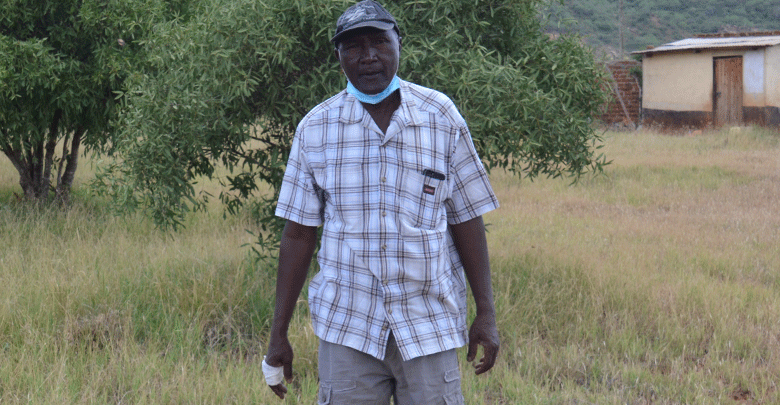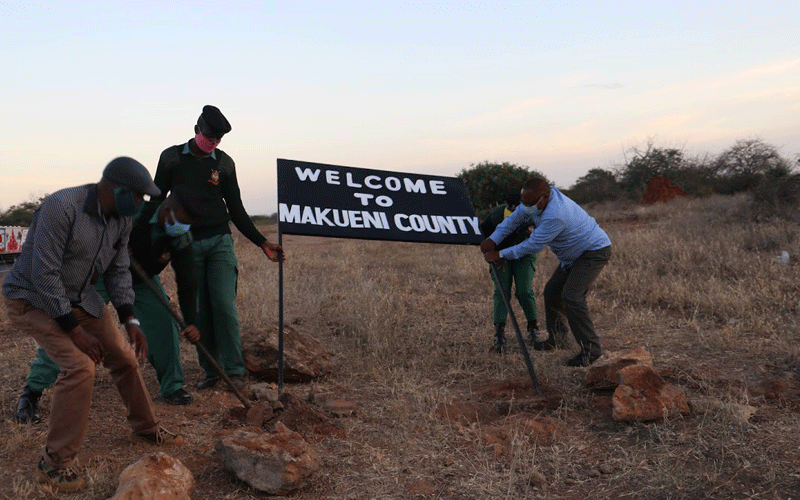Ex-warden on mission to save Wartha culture

For 34 years, he battled poachers as a Kenya Wildlife Service (KWS) ranger, protecting elephants and other endangered wildlife species from poachers in the expansive Tsavo National Park.
Now in his sunset years after retirement, 70-year old Kazungu Karissa has picked up another battle to safeguard something he considers as dear as the elephants he devoted his life to; his culture.
“My people’s way of life is facing imminent extinction. We are nearly forgotten and our rites and rituals have all but been overshadowed by the rapid modernisation and …,” he starts but his words are drowned by the deafening roar of Standard Gauge Railway (SGR) cargo train hurtling past.
Seated under a tree at Birikani area in a piece of land adjacent to the raised SGR embankment, Karissa stares at the speeding train with a distantly sad look in his eyes.
After noise is a distant echo, the old man waves his arm around at the unkempt plot.
“This is where we will set up a cultural center. It will be a sanctuary for our traditions and we hope our young people will come and learn the ways of their fathers,” he adds.
Karissa is an elder of a little-known Cushitic community called Wartha. In the few writings available for the community, Wartha are nicknamed the Elephant People in tribute to their legendary skills of hunting elephants.
Wartha is one of Kenya’s smallest tribes which according to the 2019 national census had a population of 20,103.
This is slightly less than the student population of Maseno University.
The community has Cushitic roots and originated from Ethiopia. They settled in Garsen in Tana River before splitting with others moving to Kilifi, while others moved further to Taita-Taveta to settle deep inside the vast sprawling bush that was later gazetted as Tsavo National Park in 1948. Their roots are closer to Ormas and Boranas than to other Bantu communities
In Birikani village in Voi, he estimates they are only about 300 adults. Other small groups are to be found in Maungu and Bughuta.
Wartha are naturalists who since time immemorial lived in the forest and gained global fame for their legendary archery skills that brought down hundreds of elephants for food.
Historically, the Wartha community relied wholly on forests with their food exclusively consisting of bush meat, animal fat, honey and wild berries.
As a result, the community revered nature because it was their sole source of sustenance.
They settled around swamps, rivers and other water bodies where wild animals came to drink. Rivers and other water bodies influenced their migratory routes.
Language barrier
Forest lifestyle ultimately led them to having minimal contact with outside communities.
Ironically, this aspect led to forging of very strong intra-communal bonds that sustained their cultural rites and traditions.
“We hunted animals, especially elephants and ate fruits and honey. We lived by ourselves because there were no other communities around us,” he explains.
From this isolation, Wartha became to be viewed as a secretive, enigmatic and a mysterious group. Language barrier compounded their efforts to interact with others.
Overtime, misconceptions, unflattering myths and negative stereotypes about this community spawned and spread.
One such stereotype is the derogatory title given to members of the Wartha community.
“There are those who call us Waliangulu, meaning tortoise-eaters which we find extremely offensive,” says the elder.
He says the name came after one hungry hunter was found by members of Giriama community roasting an abnormally large tortoise over open fire to feed his starving family.
The shocked people stared in awe as the hunter shared the tortoise meat with his family before leaving.
“The Giriama don’t eat tortoises and we were surprised to see a man eating one.
Sadly, lack of common language barred the hunter from telling them he had been forced to roast the tortoise to feed his starving family,” explains Karrisa.
He hunter left without knowing his survival act had generated a fast-spreading false myth about a community that ate tortoise.
Lived under trees
The elder says having lived in the bush, Wartha were masters of the bush craft.
They had incredible abilities to track animals for days and could find water in places where others could not.
The hunters could navigate the densest of bush without losing sense of direction.
“We were part of nature and knew the secrets of bush like no one else. We lived under trees.
Elephants were a preferred source of food because one could feed many families for many months,” he explains.
Even their huts were made exclusively from leaves for thermal-regulation and to blend in with the environment.
After the gazettement of Tsavo National Park in 1984, the community was driven out of the protected area.
This brutal disruption of their traditional lifestyle forced them to adjust their new lives.
They engaged in other economic activities like farming and trading with communities that still regarded them with suspicion and hostility.
Most of the families still preferred to live in small villages and away from other communities.
This interaction brought to light a most toxic stereotype about the Wartha community that Mzee Karrisa and other elders have been fighting for ages.
Due to settling away from other people and leading very simple lifestyles, other communities concluded that the Wartha community was poverty-ridden and possessed an inborn streak of ill-fortune.
“The ill-informed elders of the past even forbade their young men against marrying Wartha girls. They said we harbored bad-luck.
A rich young man who married a Wartha girl would become bankrupt while a healthy husband could fall sick and become destitute. Such stories created a rift between our communities,” he explains.
Communal intermarriages
He, however, notes that such toxic perceptions have all but died away with gradual enlightenment.
“The older generation that labelled us ‘watu wa nuksi’ (people of the bad-luck) is disappearing and such nasty outlooks are ending.
There are now even communal intermarriages,” he says. To their credit, most iconic names for places in Tsavo National Park came from the community.
They include Ndololo which means Swamp, Aruba for Elephant, Galdessa for Baboon, Satao for Giraffe amongst others.
“The community named those places after the wild animals found there,” says Kazungu.
The elder says that while interaction with the outside world has lessened the negative perceptions towards Wartha, it has also eroded the strong traditional values and ties among the community.
The children and the youth have abandoned their traditions and embraced modernity.
Modern education has further eclipsed the traditional lessons given by the elders to the young.
“Our children lack knowledge of our traditions. They do not know about our rites, rituals, naming ceremonies and practices that sustained their ancestors.
This cultural centre is meant to keep alive our identities and pass what we know to our children,” he said.
The Cultural Centre will also be patronised by other communities to learn about Wartha and deconstruct the widespread negative myths.
“Others will come to learn about our ways. We want to show them we are not bad people as they have been led to believe in the past,” he says.
Wartha elders, under the Wartha Community Cultural group, used to meet every Thursday to educate their children about their culture, but Covid-19 pandemic disrupted the programme. –KNA











